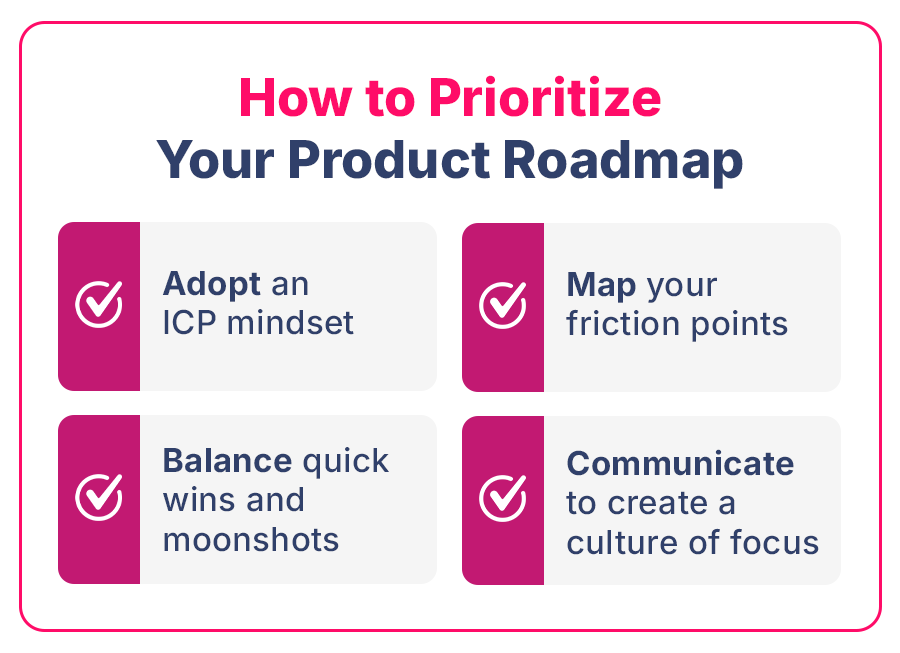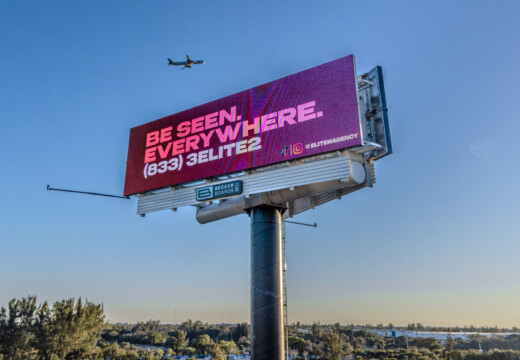How can you build a product roadmap that actually ships? Focus on friction points, customer POV, and balancing big wins with the sure bets.
For product teams, constrained resources are a double-edged sword.
On the one hand, budget limitations mean you can’t execute on as many ideas at once. But at the same time, they force laser focus on the things that really matter most—and focus is a powerful force.
A flashlight can dimly illuminate a wider area, but a laser can cut through steel.
When Supritha Shetty left her product job at Meta to join a startup—a little ol’ place called Blip—she experienced firsthand the crunch of going from a product team with enormous resources to a much leaner operation. She also felt the difference going from a company with tremendous amounts of user data to one where she needed to get more creative with user insights.
“Meta being Meta, we had access to a wealth of data. Sometimes even more than was actionable,” she explains.
“At an early-stage company like Blip, you have to rely on a mix of quantitative and qualitative insights. You have to sit down with your customers and truly understand what they’re trying to solve.”
Today, as Blip’s Head of Product, Supritha leads a product team focused on ruthless prioritization, while always keeping the customer perspective front and center.
When you have more ideas than resources
Most product teams could rattle off good ideas all day long. The real challenge is knowing which ones to prioritize. (After all, when you have 72 priorities, you have 0 priorities.)
“We all have a long list of things we’d love to have,” says Supritha. “But at the end of the day, you have to ruthlessly prioritize two or three things, maximum, and focus exclusively on those priorities a quarter at a time.”
Small product teams especially grapple with limited resources, insufficient data to make purely quantitative decisions, and pressure to solve everything immediately. They may also feel pressure to keep up with the (competitor) Joneses.
But, as Supritha explains, “Success is less about feature parity with everyone else in the industry, and more about the gaps in the market you can fill.”
Focus on the friction points
To decide what to focus on first, look for the friction points. Where are your customers dropping off in the buyer journey?
Combine quantitative data with qualitative insights to identify your users’ biggest hurdles, then focus your resources on solving those first.
“Right now, all our projects focus on friction points,” says Supritha. “Things on our product roadmap that don’t address those key friction points have been moved down the priority list, so we only prioritize projects where we confidently know there is a bottleneck.”
This approach helps you get the most bang for your product buck, where solving one problem unlocks multiple improvements down the line.
How to prioritize for a strong product roadmap

Adopt an ICP mindset
We’re gonna hold your hand while we say this one… Your customer doesn’t care about your product roadmap.
They have their own problems.
“At the end of the day, our customers don’t care about how Blip works,” says Supritha. “What really matters to them is whether their brand is being seen, and whether they’re getting their message out there in front of people.”
Building empathy for customers is a first step toward product updates that truly solve their problems.
For Blip, Supritha puts herself in advertisers’ shoes. I’m running my own business, I have a few hours a week to think about marketing, and I really need a seamless process for making and displaying an ad. This thought exercise helps her identify the biggest pain points her team can work to solve.
Talking to customers can help here as well, but don’t necessarily take everything they say at face value. Often, customers can’t articulate what they need (especially if they’ve never had a solution to a specific problem before). Read between the lines to understand what matters most.
Map your friction points
Next, identify the friction points in the user journey. Use quantitative data to analyze drop-off points, and more qualitative customer interviews to understand the “why” behind the numbers. Mapping out your entire customer journey is a great exercise for visualizing bottlenecks.
“Data is never going to be perfect. Even at Meta, it wasn’t perfect,” says Supritha. “You have to make the best decisions you can based on what you have access to.”
Once the friction points are clear, force rank each one against a set of impact criteria. Ask:
- How many customers does this friction point affect?
- Does fixing this unlock other improvements downstream?
- Can we realistically solve this with our current resources?
Balance quick wins and moonshots
For the greatest impact, create a product map that balances quick wins and more experimental big bets.
“For a team our size, with limited resources, it’s important to have a mix of short- and long-term projects,” says Supritha. “You can’t do everything, so you need to layer both.”
The quick wins are the projects that you have high confidence will succeed, and which will create incremental improvements with low to moderate effort. Think UI fixes, email optimizations, or streamlined onboarding flows.
The big bets may have a lower confidence quotient—but if they deliver, they have a huge impact. These are more transformational features, like introducing AI recommendations, automations, or cross-platform integrations.
When allocating your resources, aim for a mix of both types of projects. Quick wins give your team forward momentum, while the big bets are what ultimately help you stand out from the competition.
Communicate to create a culture of focus
Along the way, don’t forget to communicate with your team.
“Bring your team on the journey,” Supritha recommends. “Say, this is the only thing we’re going to work on for the next quarter, and everything else gets pushed down.” Share the “why” behind each priority to build internal buy-in and alignment, and don’t send mixed messages by assigning tasks outside of your designated list.
Then, take your prioritized list and fully commit.
Put everything else in your product ideas parking lot, and let your team truly focus on one thing at a time. Gather learnings as you go so you can review and adjust on a quarterly basis.
The road ahead
Your product roadmap is really about answering three key questions:
- What are you trying to solve?
- How big is that problem?
- Can you realistically solve it?
Teams that answer these questions move from working on any good idea to focusing only on the best ideas.
The result is a team where everyone knows exactly what they’re building and why, where you aren’t spread too thin across initiatives that never quite wrap up. Features get the proper attention and polish they need to shine. And quick wins maintain momentum, while big bets incubate the breakthroughs.
Today, Supritha’s team dedicates their resources to focus on proven bottlenecks, and each feature ships with clear success metrics. And while she’s seen differences between startup life and Meta, she’s also noticed similarities.
“The core principles are still the same,” she says. “It’s about building empathy, to truly understand what users need to solve their problems.”
Once you understand that, you can build a product map that doesn’t just look impressive on paper—it ships features that solve real problems for real people. That’s what will help you build an indispensable product, with an unshakably loyal following.


